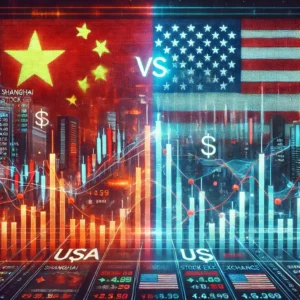Washington, D.C. — Former President Donald Trump’s proposed escalation of tariffs on Chinese goods is sending shockwaves through U.S. businesses that rely on affordable imports, with economists warning of higher prices for consumers and financial strain on small importers.
In a campaign pledge that has gained traction among his political base, Trump has floated imposing tariffs of 60% or higher on Chinese imports—a drastic increase from the rates imposed during his first term. The move, he argues, would protect American manufacturing and punish China for unfair trade practices. But critics say the policy would act as a “sledgehammer” on businesses that depend on low-cost Chinese goods, from retailers to manufacturers.
Importers Brace for the Blow
Small and mid-sized businesses, many still recovering from pandemic-era supply chain disruptions, fear the tariffs could crush profit margins and force price hikes.
“This isn’t just about big corporations—it’s about small businesses that can’t absorb a 60% cost increase overnight,” said Laura Peterson, owner of a home goods import business in Ohio. “Either we pass it on to consumers or go under.”
The National Retail Federation (NRF) has warned that such tariffs would lead to “higher prices on everything from electronics to clothing,” disproportionately affecting lower-income households that rely on affordable imports.
Economic Fallout and Inflation Fears
Economists caution that Trump’s tariff plan could reignite inflation, undoing recent progress in stabilizing prices.
“Tariffs are taxes on American consumers,” said Mark Zandi, chief economist at Moody’s Analytics. “If implemented, these levies would likely push up costs across the board, from raw materials to finished products.”
During Trump’s first term, his Section 301 tariffs on $250 billion worth of Chinese goods led to higher prices for items like bicycles, furniture, and machinery, according to a Peterson Institute for International Economics study. A 60% tariff could be even more disruptive.
Political Divide Over Trade Policy
While Trump’s supporters argue that tough trade measures are necessary to bring manufacturing back to the U.S., opponents say the approach risks triggering a trade war without clear benefits.
President Joe Biden has largely kept Trump’s original tariffs in place but targeted them more selectively, focusing on strategic sectors like semiconductors and clean energy. Biden’s team has also emphasized alliances with other Asian nations to reduce reliance on China.
But with the 2024 election looming, Trump’s hardline stance is forcing a broader debate over how—or whether—to decouple from Chinese supply chains.
What’s Next?
If Trump wins in November and follows through on his tariff plan, businesses could face immediate cost surges, potentially leading to:
- Higher consumer prices on everyday goods
- Supply chain shifts as companies scramble to source from Vietnam, Mexico, or India
- Retaliatory measures from China, possibly targeting U.S. agriculture or tech
For now, importers are bracing for impact. “We survived the first round of tariffs,” said Peterson. “But 60%? That could be the knockout punch.”



